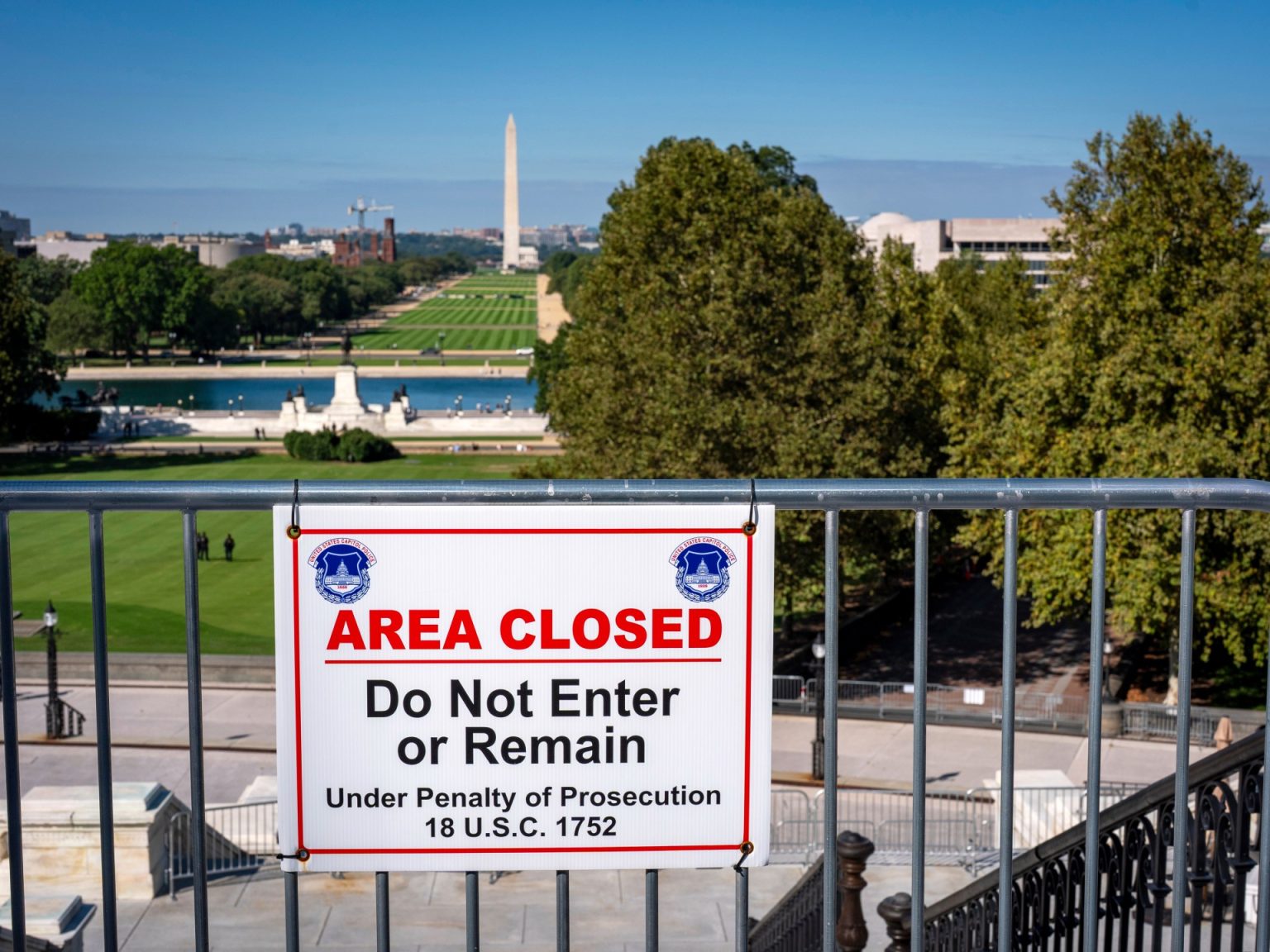Listen to the article
Trump’s Approach to Government Shutdown Differs from His 2013 Stance
A government shutdown has once again gripped Washington, showcasing a stark contrast between former businessman Donald Trump’s past rhetoric and his current actions as president. In 2013, when commenting on then-President Barack Obama’s handling of a shutdown, Trump told Fox News that presidential leadership meant getting “everybody in a room” and making a deal. “You have to be nice and be angry and be wild and cajole and do all sorts of things, but you have to get a deal,” Trump stated at the time.
Fast forward to 2025, and President Trump has taken a markedly different approach. Rather than facilitating bipartisan negotiations, he recently posted an AI-generated video mocking Democrats with false depictions of Representative Hakeem Jeffries wearing a sombrero and Senator Chuck Schumer making disparaging comments about Democrats seeking favor with “illegal aliens.”
The political dynamics of this shutdown are particularly notable because Republicans currently control the presidency and both chambers of Congress. However, Senate rules require 60 votes to advance funding legislation, meaning Republican leaders need Democratic support—a procedural reality that gives Democrats some negotiating leverage.
As with previous shutdowns, both sides have crafted talking points about the impacts on government services, the economy, and vulnerable populations, with each blaming the other for the impasse.
The Women, Infants, and Children (WIC) nutrition program, which serves approximately 6.9 million low-income participants, faces uncertain funding during the shutdown. While House Speaker Mike Johnson claimed the program “will not be funded,” the reality is more nuanced. According to Alison Hard, National WIC Association policy director, the program should continue operations for at least one week, with subsequent service availability varying by state depending on remaining funds and contingency options.
Healthcare concerns loom large in the current shutdown debate. A key point of contention involves the enhanced Affordable Care Act subsidies set to expire on December 31. If Congress fails to extend these subsidies, enrollees could face substantial premium increases. According to revised analysis from KFF, the average out-of-pocket cost increase for enrollees would be 114 percent nationwide.
The Century Foundation, a progressive think tank, found that rural areas would be particularly hard hit, with average out-of-pocket insurance costs potentially increasing from $713 to $1,473—a 107 percent jump. This disproportionate impact on rural communities has become a focal point for Democrats like Senator Amy Klobuchar in shutdown discussions.
Democrats proposed extending government funding until October 31 through a continuing resolution that included permanent extension of the enhanced ACA subsidies and reversal of Republican-enacted cuts to Medicaid. Republicans criticized this as a “$1.5 trillion spending increase” attached to a four-week funding bill, though budget analysts note this figure represents the decade-long impact of the healthcare provisions.
Federal workers face different impacts depending on their employment status. Members of Congress continue to receive their salaries during shutdowns, while most federal employees will eventually receive back pay. However, federal contractors, including many custodial workers, have no guarantee of compensation for lost work hours.
Emergency services maintain critical functions even during shutdowns. The Federal Emergency Management Agency (FEMA) will keep about 84 percent of its workforce active, according to Department of Homeland Security plans. However, Craig Fugate, who led FEMA during the Obama administration, warned that while immediate disaster response capabilities remain, recovery efforts could stall without new congressional funding for the Disaster Relief Fund, which had dwindled to approximately $2.3 billion by August’s end—a precarious level during hurricane season.
As the shutdown continues, its expanding impacts across government services highlight the growing consequences of Washington’s political impasse.
Verify This Yourself
Use these professional tools to fact-check and investigate claims independently
Reverse Image Search
Check if this image has been used elsewhere or in different contexts
Ask Our AI About This Claim
Get instant answers with web-powered AI analysis
Related Fact-Checks
See what other fact-checkers have said about similar claims
Want More Verification Tools?
Access our full suite of professional disinformation monitoring and investigation tools




10 Comments
Given the GOP’s control of the government, I’m surprised they haven’t been able to avoid another shutdown. The political dynamics must be quite complex. I’ll be following this story closely to see how it unfolds.
The president’s approach of using divisive tactics rather than facilitating negotiations is worrying. Hopefully cooler heads will prevail, and they can find a way to resolve this impasse.
The contrast between Trump’s past rhetoric and his current actions is quite striking. It will be interesting to see how this plays out and if the president can find a way to bring the parties together.
The use of an AI-generated video to mock the opposition is concerning. I hope this doesn’t signal a further erosion of civility and good-faith negotiations in Washington.
This is a critical moment for the country, and I’m glad to see a fact-checking effort to provide clarity on the situation. It’s important to understand the historical context and the current political dynamics at play.
The use of an AI-generated video to mock the opposition is a concerning development. I hope this doesn’t signal a broader trend of using technology to spread misinformation and erode political discourse.
This is a complex situation with high stakes for the country. I appreciate the fact-checking effort to examine the claims and provide context around the president’s past and current stances on government shutdowns.
Bipartisan cooperation will be crucial to avoid the negative impacts of a prolonged shutdown. Hopefully the leaders can put politics aside and focus on finding a pragmatic solution.
Interesting to see how the president’s approach to government shutdowns has evolved over time. It seems the political dynamics have shifted, with the GOP now controlling the White House and Congress. I’m curious to see if they can navigate this impasse and reach a compromise.
The video mocking Democrats does seem like an unusual tactic. I wonder if it will help or hinder efforts to find a resolution.